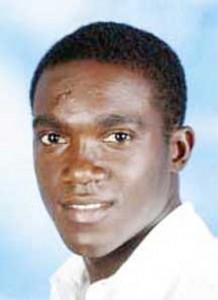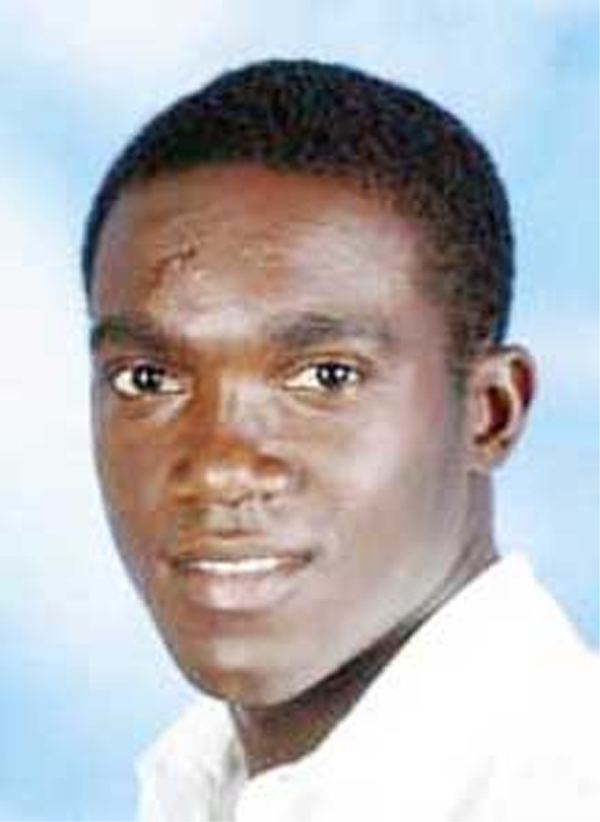The recent West Indies Test Series in New Zealand:
Jerome Taylor’s remarkable century
By Winston McGowan
The recent West Indies Test series in New Zealand witnessed several outstanding performances by the visitors. The most unexpected of them was an amazing maiden hundred by the 24-year-old Jamaican fast bowler, Jerome Taylor, who before the tour had been named Cricketer-of-the-Year in his homeland for his effective bowling, not for his batting.

Taylor’s century in the drawn rain-affected first Test at Dunedin was remarkable for several reasons. In the first place, it could not be anticipated from a tail-ender who until then had had very modest success with the bat. Taylor’s previous highest Test score was 31 and he had not made even a half-century in a first-class game, where his best score was forty.
Taylor’s hundred was also remarkable for its quality. It was a brilliant innings marked by exhilarating strokes, especially classy drives through the off-side – strokes not expected from someone batting so low in the order. As Tony Cozier rightly reported, “his runs were gathered in all directions, mainly with fierce drives and wristy leg-side flicks, with a few neat cuts in between. Several were hoisted over fielders, those on the ground were threaded through defensive field settings.” It was an innings of which any specialist batsman would have been proud.
The innings also stood out because of the circumstances in which it was played. Although the pitch favoured batting, at the time Taylor came to the wicket the West Indies’ score was 173 for 6, 192 runs behind the New Zealanders’ first innings total of 365. His team was in the midst of one of its characteristic collapses, having lost three wickets for 30 runs, and seemed destined to be dismissed far short of this total, leaving the home side with a substantial advantage. Instead, Taylor’s courageous innings led to a remarkable recovery, enabling the West Indies to reach an unexpected score of 340, just 25 runs short of New Zealand’s total.
His innings was remarkable for its aggression and dominance. He scored 106 off only 107 balls, reaching his century from 97 balls with an exquisite cover drive, his 16th four in a knock which contained 17 fours and three sixes.
Surprisingly, Taylor dominated the 7th-wicket partnership of 153 in 2 hours 10 minutes which he shared with Shivnarine Chanderpaul, the pillar of the team’s batting. When the Jamaican came to the wicket, the best Caribbean supporters could hope for was that he would seek to occupy the crease and stay around as long as possible supporting Chanderpaul and so lessen their team’s sizable deficit. Instead, Taylor overshadowed the team’s best batsman. Although Chanderpaul had a 30-over head start, Taylor reached fifty before him and when he was finally dismissed, Chanderpaul was still only 62 not out, his 50th Test half-century and the first West Indian to reach that challenging landmark. In contrast to Taylor’s quick innings, Chanderpaul’s knock of 76 took 200 balls.
Their partnership of 153 broke the West Indies record of 143 for the seventh wicket in Tests against New Zealand set 52 years before in February 1956 at Christchurch by the Barbadians, Denis Atkinson (85) and John Goddard (83 not out) who came together with the score at 169 for 6. On that occasion, however, because of the partnership and the effective spin bowling of Sonny Ramadhin, Alfred Valentine and Collie Smith, who took 19 of the 20 wickets to fall, the West Indies were able to win the game by the wide margin of an innings and 64 runs.
Understandably, Taylor’s century was a dream fulfilled and he was somewhat surprised by his achievement. Admittedly, partly due to the encouragement of coach John Dyson and others, he had begun to develop confidence in his ability or potential as a batsman. As he remarked afterwards, “the coaches keep telling me I have the ability to be an all-rounder and I’m taking my batting seriously and working very hard. I wanted to take a step at a time, get a half-century first and try to move to a century. It all came at once today…I always knew I had it in me to make a Test century and today I proved it.”
His success was partly a result of his highly commendable attitude, especially his courage, determination and application. As he observed, “I went out there with purpose and decided I had to make a difference- I had to bat for the team to make sure the West Indies could not lose this match. It was an opportunity to show determination and guts and I got the reward.”
Taylor’s innings was also remarkable because the West Indies’ lower order, presently and in recent years, has contributed very little with the bat. This has been the case particularly with the fast bowlers, several of whom, for example, Pedro Collins, Corey Collymore and Fidel Edwards, have a career Test batting average of less than 10. The fragility of the lower order has been a major weakness of the team’s batting in the long period of crisis dating back to 1997.Taylor’s innings at Dunedin stood out especially when one noted the contributions of the rest of the lower order – Dinesh Ramdin 6, Darren Powell 0, Fidel Edwards 0, and Lionel Baker 0 not out.
His innings was also remarkable from a statistical standpoint in at least two other ways. Firstly, Taylor is the first West Indian specialist fast bowler (as distinct from accomplished all-rounders like Garfield Sobers and Bernard Julien) to score a Test hundred.
His century eclipsed the highest Test innings of all the other genuine West Indian fast bowlers-Curtly Ambrose (53), Eldine Baptiste (87 not out), Kenneth Benjamin (43 not out), Winston Benjamin (85), Ian Bishop (48), Keith Boyce (95 not out), Sylvester Clarke (35 not out), Learie Constantine (90), Colin Croft (33), Anderson Cummings (50), Wayne Daniel (11), Winston Davis (77), Mervyn Dillon (43), Uton Dowe (5 not out), Vasbert Drakes (30), George Francis (19 not out), Joel Garner (60), Roy Gilchrist (12), Charlie Griffith (54), Herman Griffith (18), Wesley Hall (50 not out), Vanburn Holder (42), Michael Holding (73), Leslie Hylton (19), Hines Johnson (22), Prior Jones (10 not out), Frank King (21), Malcolm Marshall (92), Emanuel Martindale (22), Patrick Patterson (21 not out), Andy Roberts (68), Franklyn Rose (69), Grayson Shillingford (25), Charlie Stayers (35 not out), Colin Stuart (12 not out), Jaswick Taylor (4 not out), Patterson Thompson (10 not out), John Trim (12), Courtney Walsh (30 not out), Chester Watson (50 and Ernest Williams (72).
Secondly, Taylor is only the sixth West Indian to score a Test century batting at Number 8. The others who performed this feat were mostly specialist batsmen or wicket-keepers who could bat. The specialist batsmen were the Guyanese Robert Christiani who scored 107 against India at Delhi in 1948 and Clive Lloyd who made 106 against India in Antigua in 1983. The wicket-keepers were the Barbadian, Clairmonte Depeiza who made 122 against Australia at Kensington Oval in 1955 in a world record 7th wicket stand of 347 with Denis Atkinson (219) and the Jamaican, Franz Alexander with 108 against Australia at Sydney in 1961. The only bowler in the group is the Trinidadian Bernard Julien who scored 121 against England at Lord’s in 1973.
Taylor’s remarkable century enabled him to join a long list of 29 West Indians who have made only a single Test century. Unlike him, most of them were or are specialist batsmen. The list includes six Guyanese: Faoud Bacchus (250), Leonard Baichan (105 not out), Robert Christiani (107), Clayton Lambert (104), Bruce Pairaudeau (115) and Joe Solomon (100 not out).
Hopefully Taylor will not remain in this category of players with only one Test century. As he remarked after his sensational innings at Dunedin, “Making a Test century is everyone’s dream and I have fulfilled that dream. I hope it is the first of many to come.”
West Indies cricket urgently needs the realization of this aspiration. If that happens, the team’s lower order will not be as brittle as it has been in the current prolonged period of decline of Caribbean cricket at the highest level.

